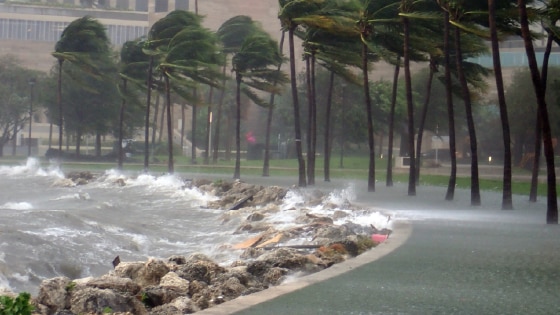
Urban development in the United States is on the rise, as is urban flood risk. Between 2000 and 2010, urban land area in the U.S. increased by 15 percent. Today, more than 106,386 square miles are categorized as urban space, and that number is projected to more than double by 2060.1,2
Not surprisingly, with this growth in urban area comes significant environmental impact, including a loss of natural vegetation and an increase in impermeable surfaces. As we continue to build out roads, parking lots, and driveways, the amount of land available to absorb rainfall and runoff is proportionally reduced, paving the way – literally – for flooding and flood-related property damage.
Floods where there were none
Of note is the fact that properties in urban areas that previously have not experienced flooding are now becoming flood-prone. With greater areas covered in impermeable surfaces come greater amounts of runoff, with two results: increased flood frequency, even in areas where there historically has been none, and flood severity, increasing even in areas where flooding is expected.
Shopping centers, housing, and other urban developments are prime examples. As rainfall and runoff move through them, they have limited destinations; water either accumulates in low spots within the urban area, or it continues as runoff until it reaches a stream or other body of water. Either scenario, depending on the exact layout of permeable and impermeable land, can result in flooding.
Another contributing factor to urban flooding is erosion of urban streams as a consequence of land development. Paved surfaces funnel more water into existing streams, and the ensuing flooding increases channel and bank erosion. Where channels have been straightened and vegetation removed, streamflow velocities increase, more sediment is carried from banks, and the likelihood of flooding increases. In many urban areas, streambank erosion has become difficult to control and represents a persistent threat to roads, bridges, and other structures.3
Gaps in flood data
So, what is being done to track changes in both the number and severity of floods? The Federal Emergency Management Agency (FEMA) maintains flood maps, but those maps are revised and updated at long intervals – usually a decade or more.
Because of this lag in data, a property’s potential for flood exposure may be understated, while contingency plans for flooding either go undeveloped or do not reflect the possible heights floodwaters may reach.
Effects on property and the environment
Our internal research shows that a growing number of flood losses come not only from 100- or 500-year flood zones – where we expect to see them – but in areas adjacent to these. One explanation to this is the contribution from increased runoff.
Urban development can have a negative effect on ground water levels as well. Impermeable surfaces prevent rain and snowmelt from entering subsurface soil and adding to groundwater, resulting in lower groundwater table elevations and higher runoff velocity and volume.
Urban runoff can also affect water quality by moving pollutants into larger bodies of water. These pollutants include:
- Oil and grease from automobiles
- Pesticides and fertilizers from lawns and gardens
- Bacteria from animal waste and failing septic systems
- Road salt and road treatment chemicals
- Heavy metals from roof shingles or vehicles
In fact, urban runoff and storm sewers are the third leading source of impairment for lakes, ponds, and reservoirs nationally4.
Runoff events can adversely affect potable and nonpotable water quality and potentially cause safety concerns in recreational areas. Their associated pollutants can cause the degradation of animal habitats and sensitive receptors, including fish and other aquatic populations, and can result in higher water temperatures, decreased wildlife populations, and decreased native vegetation.
Reactions to flooding in urban areas
As flooding in urban areas becomes a more persistent issue, numerous municipalities have begun requiring permeable pavers or pervious (porous) concrete for residential driveways and commercial projects such as parking lots. Though expensive compared to their traditional counterparts, these alternative materials are more environmentally friendly because they allow water to seep through them and into the ground, rather than channeling runoff across their surfaces.
For more information on permeable pavement, visit this article from the U.S. Environmental Protection Agency (EPA): Soak Up the Rain: Permeable Pavement.
In addition, builders may be subject to new mandates that require construction projects to include retention ponds that store stormwater and street runoff, releasing it slowly back into the environment. These retention ponds also allow sediment and some pollutants to settle, serving a secondary, beneficial purpose.
Helping to mitigate urban flood risk with support from risk managers and insurers
Urban flood risk may be mitigated through a combination of structural and nonstructural measures, and will likely involve the cooperative efforts of insurers and risk managers, as well as local and state officials, the business community, and federal agencies. Here are some potential solutions to consider:
- Green infrastructure. One way to help mitigate the impact of flooding is to incorporate green infrastructure into urban planning. Some examples include green roofs, permeable pavement (as mentioned earlier), and integration of landscaping that can absorb and store water.
- Stormwater management. An effective stormwater management system can help to reduce the risk of flooding in urban areas. This may include using the retention ponds we discuss above, as well as infiltration trenches and other infrastructure that can retain or control stormwater runoff.
- Land use planning. Land use planning can be updated to reflect the increased need for flood risk mitigation. These plans may guide development in newly flood-prone areas or require new construction to incorporate flood mitigation measures.
- Education and outreach. Educating the community about flood risks and how to prepare for them can help to reduce the impact of flooding in urban areas. Key steps to take include providing information about evacuation routes, emergency kits, and other preparedness measures.
It goes without saying that urban property owners and developers want to preserve their investments and their peace of mind. By taking steps to help prevent flooding, they are better positioned for the future and contributing to a more stable urban community. Insurers and risk managers can be key partners in this process, helping to assess and mitigate risk before property damage occurs.
Learn more about how Liberty Mutual can help businesses rebuild and recover from the unexpected on our property page.
References:
- U.S. Census Bureau (2012) United States Summary: 2010 Population and Housing Unit Counts. 2010 Census of Population and Housing.
- Nowak, D. and E. Greenfield (2018) Declining Urban and Community Tree Cover in the United States. Journal of Urban Forestry and Urban Greening: 32-55.
- Conrad, C.P. (2016) Effects of Urban Development on Floods.
- US EPA, “Polluted Runoff: Nonpoint Source Pollution”, December 1, 2022.
- US EPA, “National Management Measures to Control Nonpoint Source Pollution from Urban Areas”, November 2005.
- US EPA, “National Water Quality Inventory: 2000 Report to Congress”
Featured insights
This website is general in nature, and is provided as a courtesy to you. Information is accurate to the best of Liberty Mutual’s knowledge, but companies and individuals should not rely on it to prevent and mitigate all risks as an explanation of coverage or benefits under an insurance policy. Consult your professional advisor regarding your particular facts and circumstance. By citing external authorities or linking to other websites, Liberty Mutual is not endorsing them.



